Best E-bikes for Teens and Families
LEGEND
About Us and Why We Wrote This Guide
As founders of Bikabout, we’ve spent the past decade exploring more than 30 cities around the world by bike — from Amsterdam’s canals to Portland’s greenways — learning firsthand what makes a great ride for families and everyday riders alike. Our passion for two wheels is deeply personal: our 16-year-old daughter has been biking since she was three and riding an e-bike for the last four years. She’s so confident and independent on her e-bike that she has little interest in getting a driver’s license — a shift we’ve seen echoed in teens everywhere.
Our family’s first e-bike adventure began with a Pedego pulling a 5-year-old on a Burley Piccolo trailerbike across 340 miles of the Great Allegheny Passage Trail. Since then, we’ve ridden, rented, or reviewed nearly every major e-bike brand — while testing them through the lens of real family life. As Outside Magazine e-bike reviewers, we bring both professional rigor and lived experience to every recommendation we make.
Megan Ramey, named the Bike League’s Educator of the Year and currently Safe Routes to School Manager for Hood River County School District, has spent years teaching families how to ride safely and confidently. She’s also presented three years in a row as a national subject matter expert on E-bike Education and Youth at the National Safe Routes to School Summit. Together, as certified League Cycling Instructors, we approach every review with a mix of enthusiasm, expertise, and a deep belief that e-bikes can transform how families move, connect, and explore.
To read more about the opportunities and issues with youth and E-bikes, please see our blog post.
This guide is for parents and teens ready to make that leap — informed by thousands of miles, countless test rides, and a lifelong love of biking as freedom.
Our Cargobike History and What We Loved
Our family’s cargo bike story began in 2010, when our daughter was just four months old. Back then, we strapped her car seat securely into a Burley trailer, hitched to our Trek Bonneville or Phillips vintage bike, and rolled off for errands, groceries, and adventures. Front baskets and rear panniers carried the essentials, and over time, we graduated through a lineup of classic child seats — the Bobike Mini and Yepp Maxi — before deciding to take the leap into the wonderful world of cargo bikes.
May 2010, Central Park: Our first “cargobike” was a using ratcheting tie down straps to harness our Annika’s carseat in a Burley Trailer. This was our first car-free trip from Boston to New York.
In 2012, we splurged on our first cargo bike: a WorkCycles FR8. It was love at first ride. The FR8’s thoughtful design and unmatched functionality made every trip — whether to preschool or the farmer’s market — feel effortless and joyful. That led us to our next addition, a WorkCycles Bakfiets, a front-loading “box bike” that made hauling both our daughter and our weekly groceries a breeze.
2013, Cambridge: Our first real cargobike, a Workcycles FR8. RIP, Gordo puggy.
When we moved from Boston to hilly Hood River in 2016, reality hit: our beloved “acoustic” cargo bikes weren’t cutting it anymore. The hills had us making excuses not to ride, which we knew meant it was time to go electric. We sold our WorkCycles and invested in an electric Urban Arrow box bike and a Pedego mountain bike that could tow a Burley Piccolo trailerbike (and occasionally even a Burley trailer — triple towing!). Suddenly, every errand and school run was back within reach.
2016, Hood River: Our first electric cargobike, an Urban Arrow. The annual tradition of Christmas trees by bike became much easier!
Most recently, we added a Tern GSD to our family fleet. It fills a unique niche of versatility — compact, strong, and capable — yet it reminds us of our original FR8 in how intuitively it fits our daily rhythm. Each bike has told a chapter in our family’s story, shaping how we move through our community and connect as a family.
Aspects We’ve Loved About Our Cargo Bikes
-
Reliable, bright, and always ready, especially when wired directly into the e-bike battery.
-
Built to haul anything from groceries to camping gear without flex or wobble.
-
Rock-solid stability when loading kids or cargo.
-
Keeps clothing clean and maintenance minimal.
-
Protects passengers (and pants legs) from getting caught in the rear wheel.
-
Essential for controlling heavy loads safely on steep descents.
-
A happy passenger makes every trip smoother.
-
The upright geometry, wide tires, and stable handling make cargo bikes surprisingly plush to ride.
-
The built-in wheel lock you never knew you needed until you had one.
-
From school drop-offs to grocery hauls to spontaneous adventures, a cargo bike adapts to it all.
e-bike Amenities to consider
Price – Ensure the total cost fits your budget including any add-ons, accessories, and expected maintenance.
Geometry – The frame size and shape should suit your rider’s height and intended use (commute, family cargo, teen ride).
Cargo – Look at front or rear baskets and/or rear bags for hauling gear, groceries or kids.
Passenger capacity – If you’ll carry a child or extra rider, check whether the bike is rated and designed for that.
Motor – Consider motor type, power (torque), placement (hub vs mid-drive) and how it performs on your terrain.
Brakes – Strong, reliable brakes (e.g., hydraulic disc) matter especially when carrying extra weight.
Throttle – Decide if you want a throttle (for pedal-assist override) and check how it’s implemented.
Tires – Wider, puncture-resistant tires enhance comfort, stability and durability—especially for family and cargo use.
Fits on bike rack on cars or city buses – these bikes length and wheel size will fit on any conventional bike rack on vehicles or city buses.
Café lock – A built-in lock (or a mounting point for one) adds convenience and security for everyday stops.
Lights – Integrated front and rear lights enhance safety and reduce the need for add-ons.
Center kick-stand – A sturdy stand is helpful when parked with cargo or passengers on board.
Pedals without assist – The bike’s weight and geometry should still allow you to pedal manually (even when battery is depleted).
Technology – Features like phone connectivity, apps, geofencing or GPS tracking add convenience and security.
Use these as your roadmap when comparing e-bike options so you end up with a model that performs for both teens and families.
Our rationale for recommendations
Our approach to reviewing e-bikes comes from years of family riding, professional testing, and a deep belief that bikes should make daily life easier, safer, and more joyful — not more complicated. Whether it’s a tween pedaling to school, a teen commuting to their first job, or a parent hauling kids and groceries, every e-bike we recommend earns its place through hands-on experience and thoughtful evaluation in four key areas:
-
We prioritize bikes that inspire confidence, not intimidation. That means stable handling, predictable power delivery, and quality components like hydraulic disc brakes, wide tires, integrated lights, and upright geometry for visibility. We also look at speed governors, motor output, and frame design to ensure the bike’s power and size are appropriate for younger riders or when carrying children.
-
If a bike isn’t comfortable, it won’t get ridden. We test for frame fit across a range of rider heights, adjustable components, ease of mounting and dismounting, and ride quality on real-world terrain — from smooth city paths to bumpy school routes. For family setups, we assess cargo capacity, child seat compatibility, and accessories that make everyday errands simpler and more enjoyable.
-
Families need reliability, not a hobby in bike repair. We evaluate the durability of drivetrains, ease of charging and removing batteries, availability of replacement parts, and manufacturer support. Low-maintenance features like internal gear hubs, belt drives, and puncture-resistant tires earn extra points for keeping busy parents and teens rolling smoothly.
-
A great e-bike should fit seamlessly into everyday life. We look at versatility — can it carry a passenger, haul gear, climb hills, and still be fun to ride? We also consider storage and transport logistics: foldability, weight, and how the bike integrates with other modes of travel. The goal is always to find e-bikes that extend independence for teens, simplify family logistics, and make biking a natural, rewarding part of the day.
Best E-bikes for Teens and Tweens
All of the E-bikes that we recommend for tweens and teens will feature safe braking systems and pedal assist motors with no throttles. Our daughter has ridden most of the models and all of the brands between the ages of 11-16 years old.
Gazelle - $2600+
Gazelle probably makes the highest price point E-bike but this Dutch company has been in the transportation biking game forever. This will be the most comfortable and convenient ride - your child will be spoiled.
Trek Verve - $2000
Trek’s Verve is the lowest price point option with good components. Trek has a long history making quality bikes. The only downside is the battery life, depending on the model.
Ramblas - $2500+
This E-mountain bike by Aventon is the brand’s only class 1 E-bike. Parents will need to control the bike’s computer with an app so the maximum speed cannot be increased beyond the legal, class 1 limit, which is 20 mph.
Woom UP 6 - $1999
Woom is our FAVORITE kids’ brand and we are psyched that they offer an appropriate class 1 E-bike for children, 10+ years old.
Brompton - $3300+
They’re an investment, but if you truly need an E-bike that folds down quickly and becomes tiny, nothing else comes close to the electric Brompton. They won’t carry another person or much gear, but for urban commutes they are magical.
Tern Quickhaul - $2500
Tern is a brand that can do no wrong in this household because of the thoughtfulness on utility. Not only can these E-bikes carry a friend or any stuff and gear that your child needs to haul, but it fits on a bike rack on a vehicle or city bus.
Best E-bikes for Families or Carrying Children
We love these electric cargobikes for their ability to carry children, infant to teenager, plus any errands like groceries.
tern GSD / HSD - $4500+
This is the do-it-all mid-tail style bike, which means it can go on a bike rack on a vehicle. Tern has incredible reputation of quality and function. We absolutely love ours and would buy so many more of their accessories if we could.
Aventon Cargobikes - $1699+
This is another economical model with great customer service and family friendly accessories.
urban arrow - $6000+
We are incredibly biased as we have had an Urban Arrow since 2016 and are still on our original battery, with maybe $500 in parts for brake pads and bleeding the shifting lines.
Blix packa - $1899+
Blix bikes are a great economical model with plenty of cargo capacity and accessories to make life by bike convenient.
Riese & Muller
Surly
Yuba
Burley Trailer
Xtracycle
Used E-bikes: what to look for?
A used e-bike can be a great way to save money and reduce waste — but only if you know what to look for. E-bikes have more complex systems and wear points than traditional bicycles, so careful inspection can save you from expensive surprises down the road. Here’s what we check before buying a pre-owned model:
-
Most e-bikes display total mileage on the controller screen. This number tells you roughly how many charge cycles the battery has been through. Since all batteries lose capacity over time — and the battery is typically the most expensive component to replace — lower mileage is generally better. Ask the seller how long the bike has been stored and whether the battery was charged periodically during storage, as neglect can shorten battery life.
-
Inspect the frame carefully for cracks, dents, or signs of repair, especially near welded joints. Because e-bikes are heavier and faster than unpowered bikes, even a single crash can cause structural damage that isn’t immediately obvious. If you’re unsure, a local bike shop can often do a quick inspection for peace of mind.
-
Check how much tread remains and whether the sidewalls are cracked or dry. Replacing worn tires isn’t difficult, but a good pair can easily cost $100 or more, plus labor. Worn tires also indicate how hard and how often the bike’s been ridden.
-
E-bikes wear through brake pads much faster than regular bikes due to their added weight and speed. Pads are visible inside each caliper — if they’re down to about 1mm of material, plan to replace them soon or risk damaging your rotors.
-
Stick with bikes that use reputable electronics systems like Bosch, Shimano, or Yamaha. These brands have widespread dealer networks, reliable software updates, and replacement parts that will remain available for years.
The same applies to drivetrain and braking components:
For shifting, Shimano and Microshift offer dependable performance across price points.
For braking, Magura and Tektro make solid hydraulic systems that are easy to service.
For tires, Schwalbe and Continental tend to deliver better puncture resistance and longevity than budget brands.
Buying used can be a smart move — just make sure you’re saving money on the purchase, not losing it later on repairs.
Reasons why some E-bikes are safe or unsafe for kids?
When evaluating e-bikes for tweens and teens, safety should always come before speed or style. Electric assist can empower young riders with independence and confidence, but certain design choices can also increase risk — especially for those still developing bike handling skills. Here are the key factors that make some e-bikes safer than others:
-
E-bikes equipped with throttles often behave more like electric scooters than bicycles. A throttle allows the bike to accelerate at full power — sometimes even while stationary or on its kickstand — without any pedaling. This can easily lead to accidental activation or sudden bursts of speed that catch young riders off guard.
On higher-speed Class 3 models (up to 28 mph), that power can also endanger others in bike lanes or shared spaces. Compounding the risk, many Class 2 and 3 e-bikes have speed governors that can be easily modified to exceed 30 mph, crossing into the territory of electric motorcycles, which require a license in most states.
Due to the growing popularity of throttle-equipped e-bikes and e-motorcycles marketed to youth — and a rise in related crashes and injuries — some communities, like Marin County, California, have instituted local regulations restricting minors to Class 1 (pedal-assist only) e-bikes, despite statewide laws that permit riders of all ages on Class 1 and 2 models.
Because of this evolving regulatory landscape — and the blurred lines between e-bikes and e-motorcycles — we generally do not recommend throttle-equipped e-bikes for kids or teens, unless the throttle can be disabled or limited to 5 mph, similar to safety standards in the European Union.
-
Stopping power is non-negotiable. E-bikes are heavier and faster than traditional bikes, and that extra momentum demands high-quality braking systems. Unfortunately, brakes are often the first area where budget brands cut costs.
Cable-actuated disc brakes typically lack the stopping strength required for a heavy or high-speed e-bike, and even some entry-level hydraulic systems struggle under the load of a cargo setup or steep terrain. For young riders, we recommend hydraulic disc brakes from reputable manufacturers — they deliver consistent, reliable stopping power in all weather conditions and provide the control kids need to ride confidently.
-
More watts don’t always mean a better bike — especially for youth. Anything above 500 watts of continuous motor output on a non-cargo e-bike usually provides more acceleration than most young riders can safely manage. Overpowered motors can make it harder to control the bike in tight spaces or when navigating unpredictable environments.
Instead, look for modest power paired with responsive pedal assist, where the motor enhances a rider’s effort rather than replacing it entirely. This balance builds skill, awareness, and independence — all key ingredients for safe and confident riding.
Below: examples of E-bikes that are not safe for most teenagers under 16 years old. Some of them are legitimately E-motorcycles, because they can go 30mph and require a license. Additionally, the speed governors are easy to modify.
Tips for Your First Ride
Test-riding an e-bike in a car-free parking lot or quiet neighborhood street is very different from navigating the real-world mix of traffic, intersections, and distractions. Unless your child has grown up riding in city streets, it’s essential that parents take a test ride alongside them on an acoustic bike first. Observe how they brake, shift, turn, and position themselves in traffic. A lack of street-riding education can turn a simple situation into a dangerous one — but with preparation and patience, that first ride can be a joyful, confidence-building experience.
Here are a few tips to help you and your family have a comfortable, safe, and fun first ride:
-
Start your first ride with a reward in mind — ice cream, a scenic viewpoint, or a favorite local shop. Making the ride about the experience rather than the equipment helps new riders relax and associate biking with joy.
-
Especially for children, it’s important to have a strong foundation on a traditional (“acoustic”) bike before switching to electric assist. Our daughter grew up walking and biking in cities from age three, so the transition to an e-bike felt natural. Less experienced tweens and teens will quickly reveal what they need to improve — and because e-bikes are so much fun, they’ll be highly motivated to learn.
-
Every state has its own e-bike rules around speed classes, helmet use, and where e-bikes can ride. The League of American Bicyclists offers a great resource for up-to-date, state-specific laws. Knowing your rights and responsibilities builds confidence and keeps everyone safer.
-
Your best biking route is probably not your usual driving route. Use local bike maps or Google Maps’ “bike layer” (keeping in mind it’s not 100% accurate) to find low-stress streets, protected lanes, or shared-use paths. A calm, comfortable route helps new riders focus on handling rather than traffic.
-
Before engaging the motor, spend time riding your e-bike with the assist turned off. This helps you get familiar with braking, shifting, and turning under your own power. Every e-bike has slightly different geometry and handling, so understanding how it moves without power will make you a safer rider when the assist is on.
-
If you’re using a cargo e-bike, practice first without passengers or heavy loads. You should feel completely comfortable balancing, starting, and stopping before carrying children or cargo. For tweens and teens, talk about making their own safe riding decisions — not following friends impulsively or feeling pressured to take risks.
-
If an intersection feels intimidating or traffic is confusing, there’s no shame in getting off and walking your bike through a crosswalk. It’s often the safest and most confident choice, especially for new riders.
-
Whether a motorist waves you through an intersection when you’re not ready or is waiting impatiently behind you, don’t rush. Take your time, make eye contact when possible, and proceed only when you feel safe. Confidence comes from riding at your pace, not someone else’s.



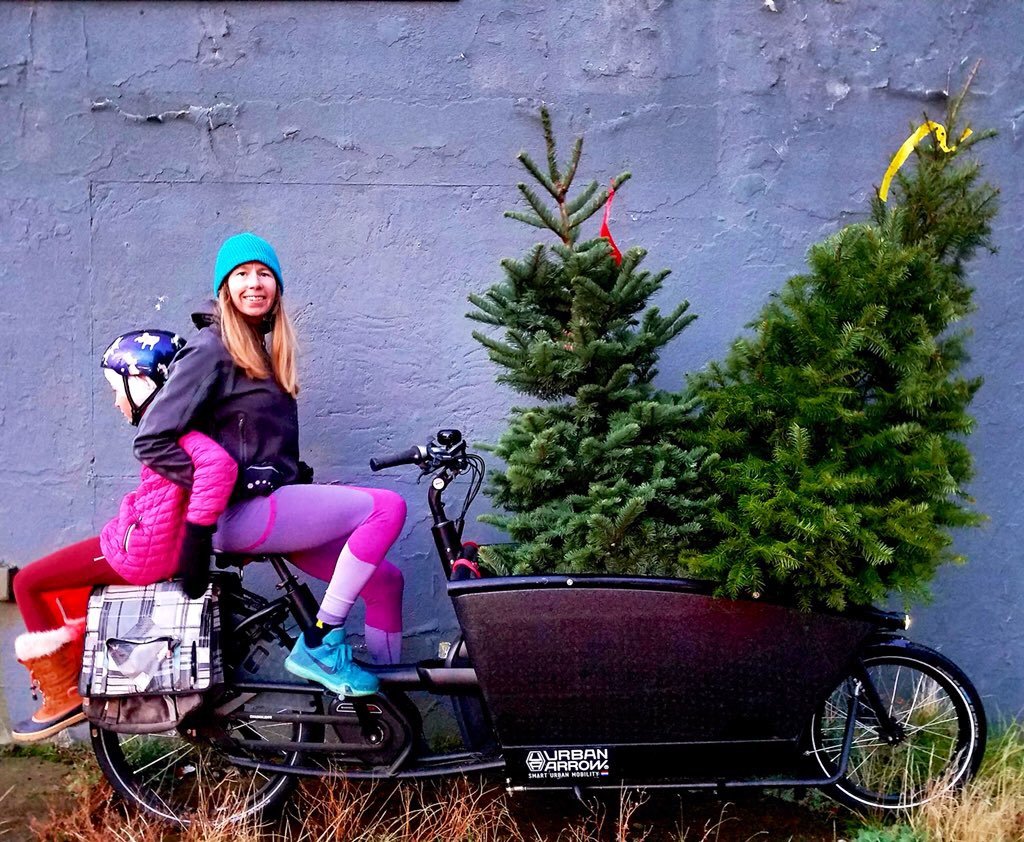





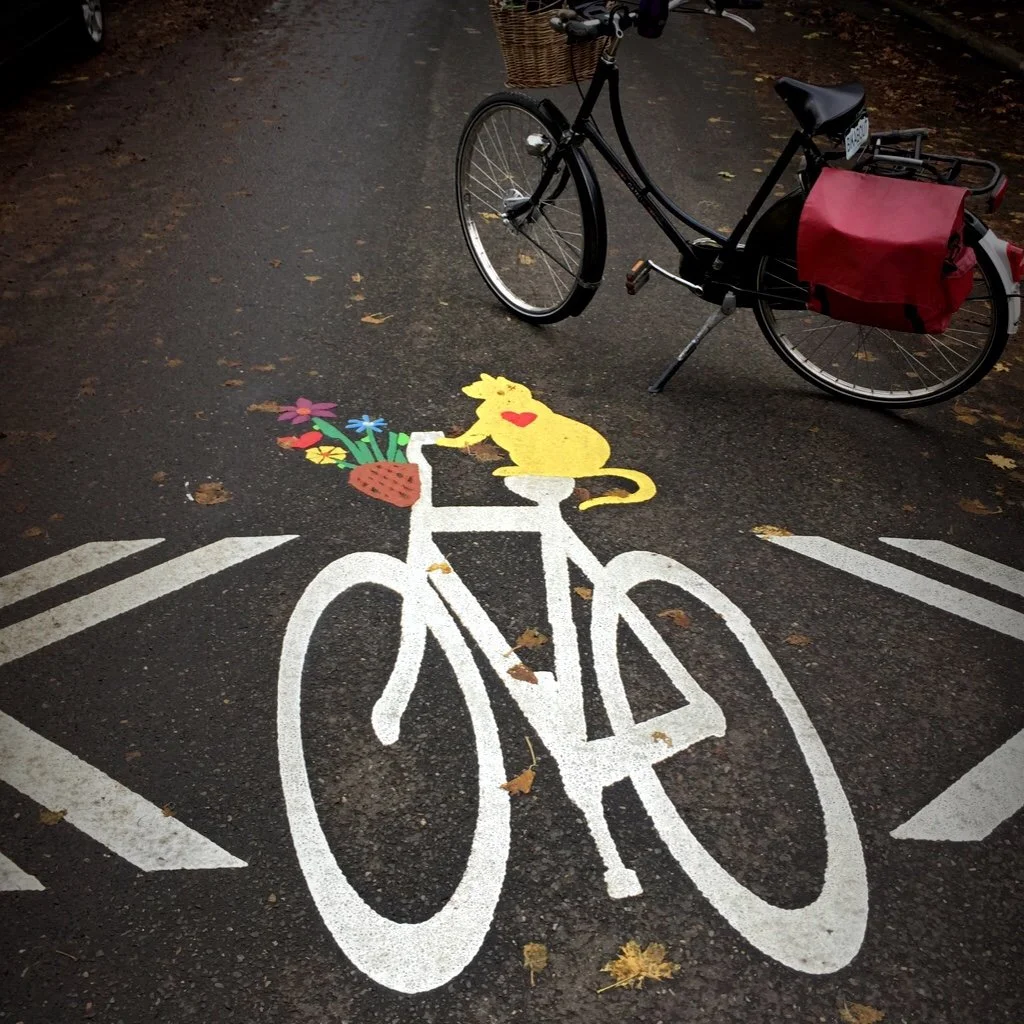









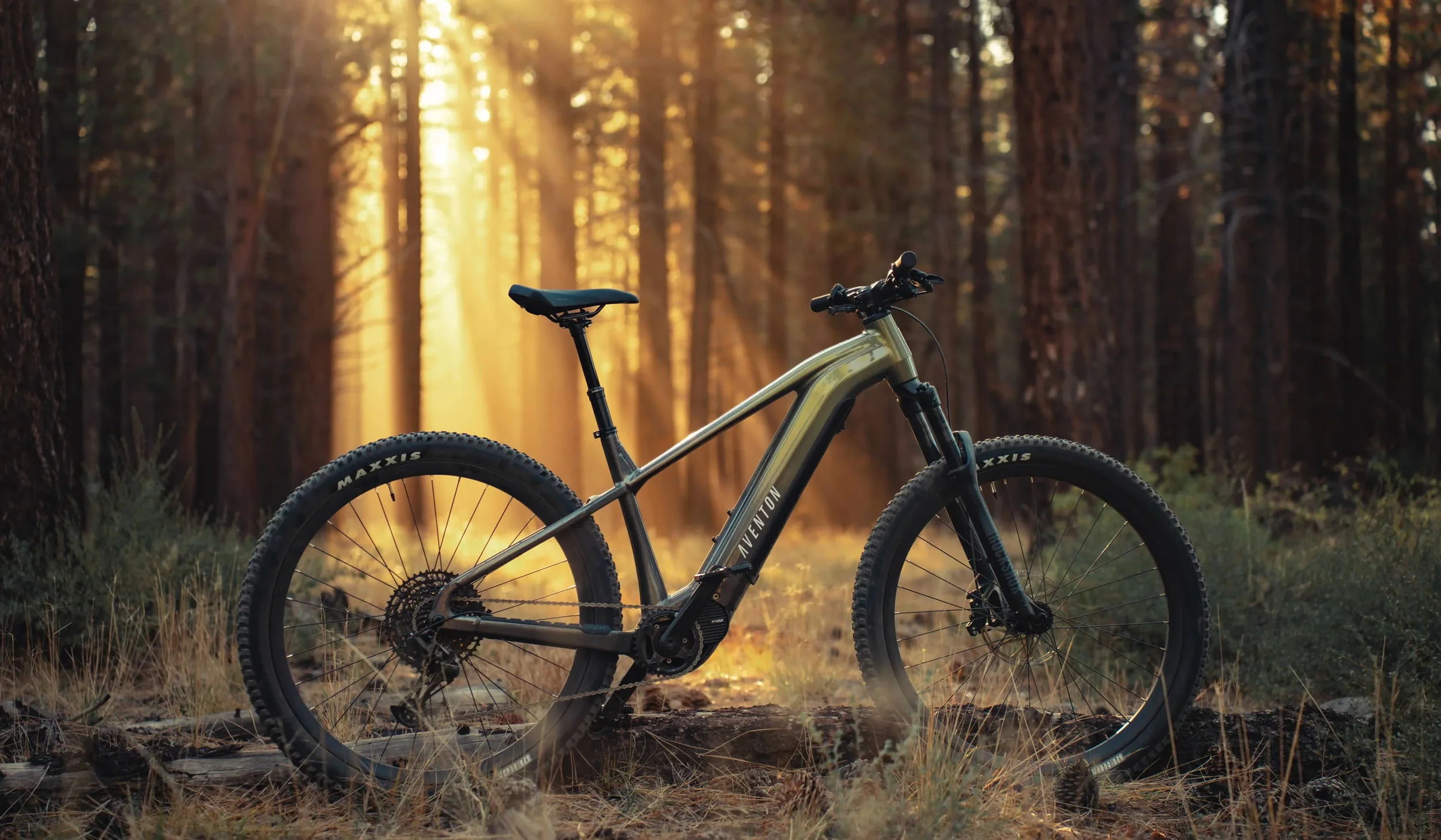
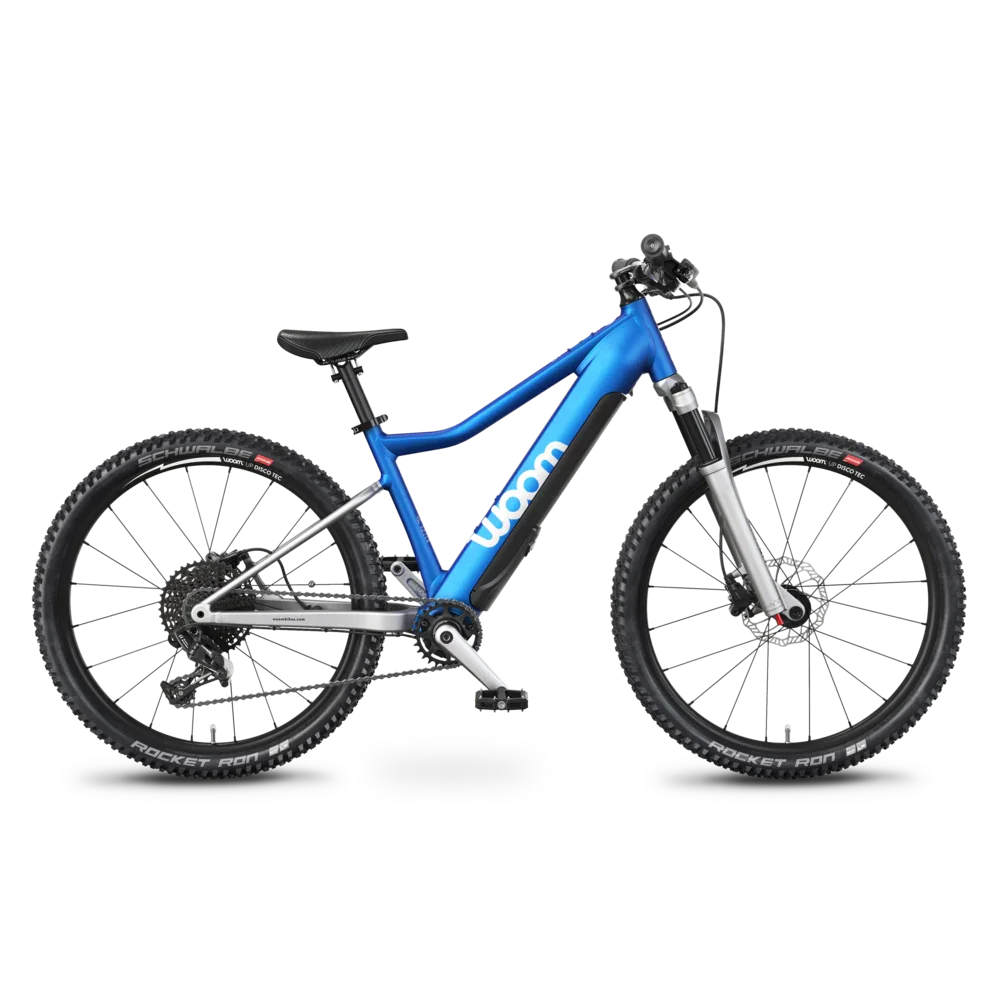

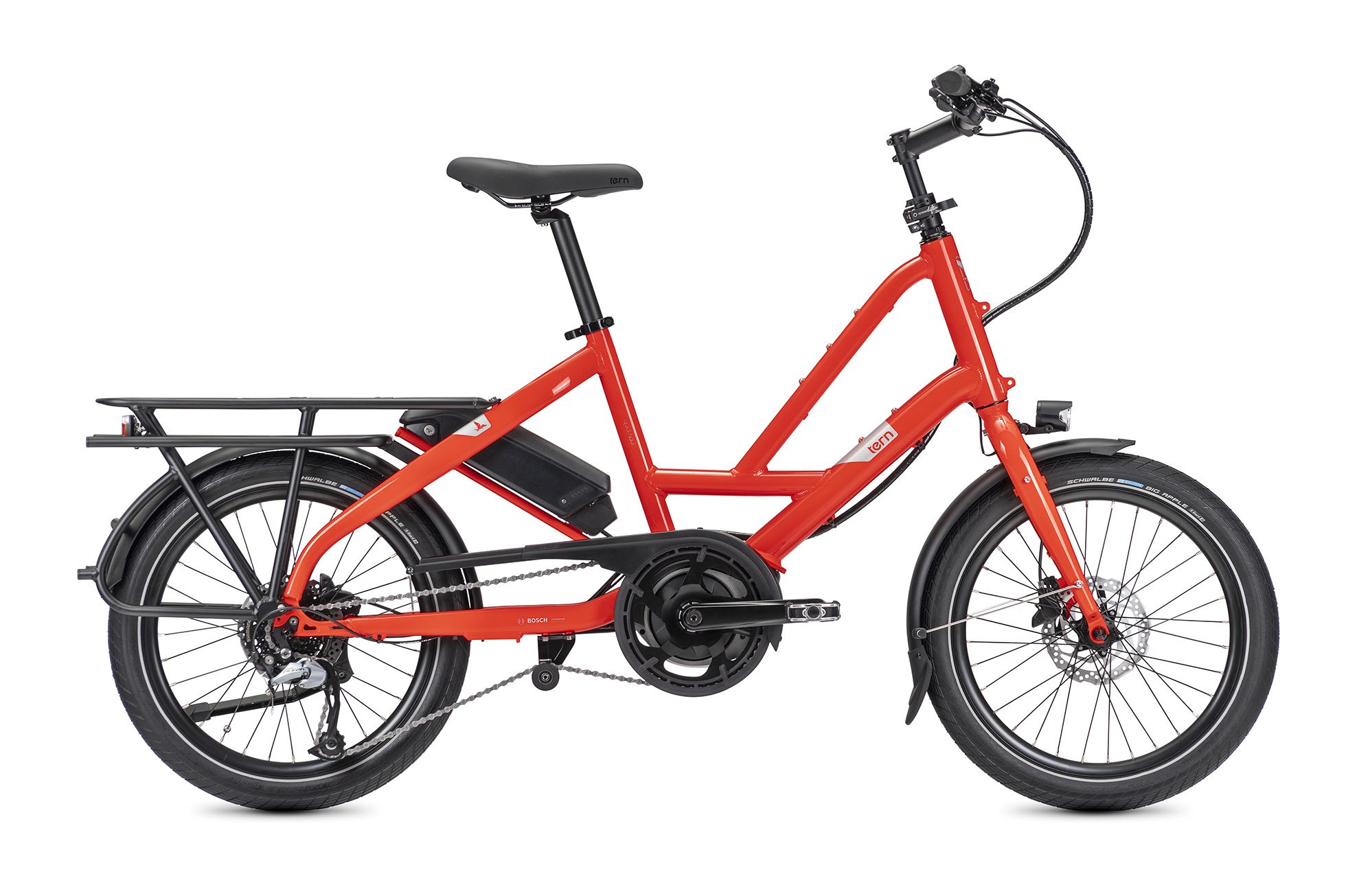



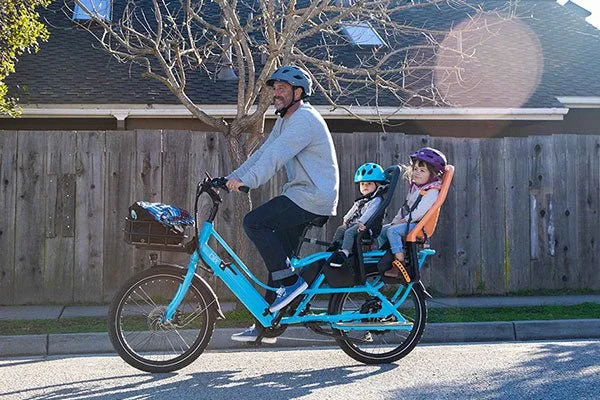

















Teens and tweens, 10-14 years old, are flocking to E-bikes to transport themselves and friends to school, activities and social engagements. With street biking education, experience, and empathy, E-bike riding can be safe and convenient.
Megan Ramey is a subject matter expert on youth and E-bikes. She is the Safe Routes to School Manager for hilly Hood River County School District, a Bike League certified instructor and the mother of a teenager who grew up riding bikes and has been riding an E-bike since she was 10 years old.